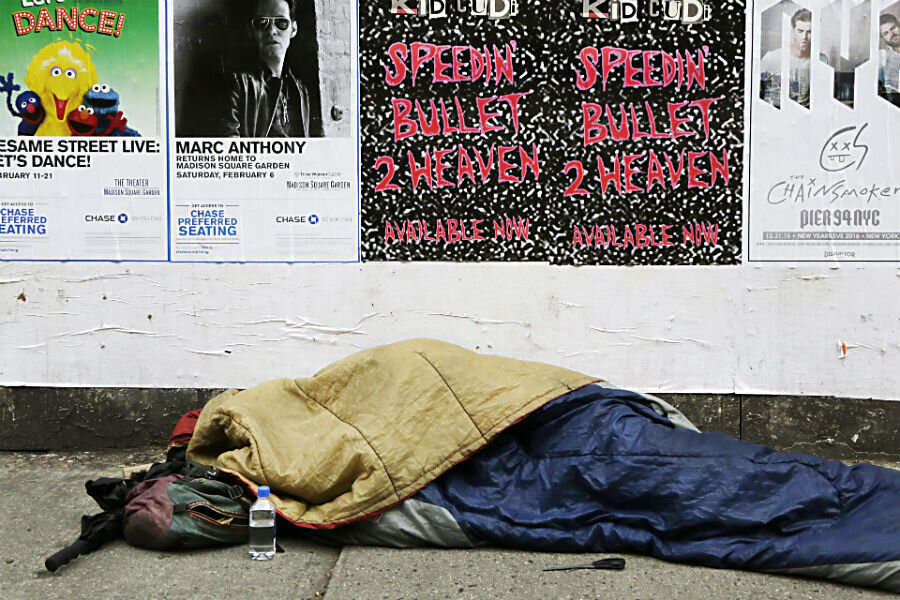N.Y. mayor challenges Gov. Cuomo's order to bring homeless inside
Loading...
The office of New York City Mayor Bill de Blasio has challenged the legality of New York Gov. Andrew Cuomo’s executive order requiring communities statewide to take homeless people from the streets, by force if necessary, to shelters when temperatures outside reach freezing.
The mayor's office has criticized the order as an empty degree lacking any legal or financial teeth to back it up.
"We support the intent of the executive order, but to forcibly remove all homeless individuals in freezing weather, as the governor has ordered, will require him to pass state law," said the mayor's spokeswoman Karen Hinton in a statement.
"This executive order adds no legal or financial resources to New York City's programs to assist the homeless and merely requires all New York state localities follow many of the same requirements as New York City to shelter families and individuals in need in freezing temperatures," she said.
The governor said the executive order, signed Sunday and due to takes effect Tuesday, will protect the state's growing homeless population of 80,000 individuals. According to the emergency declaration, the state will support local social services organizations with “facilities, resources or expertise” if necessary.
If legally challenged, Gov. Cuomo said he’s ready for a fight with anyone who believes "people have a civil right to sleep on the street and freeze to death." According to the order, state law allows the “involuntary placement” of individuals to protect them from harming themselves or others.
Given this, the order requires social service agencies and police to move homeless people off the streets and into shelters, against their will if necessary, when temperatures reach 32 degrees Fahrenheit (O degrees Celsius) or below.
"Our state, which has a beautiful tradition of social progress and community, should not leave anyone outside in freezing temperatures. That's called basic humanity," Cuomo said during an interview on New York City news channel NY1.
New York City and others across the country have long grappled with the dilemma of how to deal with homeless people who refuse to be taken to shelters, even under severe weather conditions. Many refuse because they’re afraid of falling victim to crime in the shelters.
The governor's order comes on the heels of a NYC initiative to help homeless in Manhattan, reported The Christian Science Monitor.
As part of the initiative, the city’s outreach staff of 175 will be boosted to more than 300 to cover an eight-mile stretch of territory in Manhattan, from Canal Street to 145th Street, and in some sections of the city’s other boroughs.
The workers plan to make more frequent contact with the estimated 3,000 people who live on NYC’s streets, in an effort to offer medical and other services and, crucially, shelter.
This report uses material from the Associated Press and Reuters.





